Taqiyah vs Kippah vs Zucchetto, it's not so much a debate as an interesting comparison.…
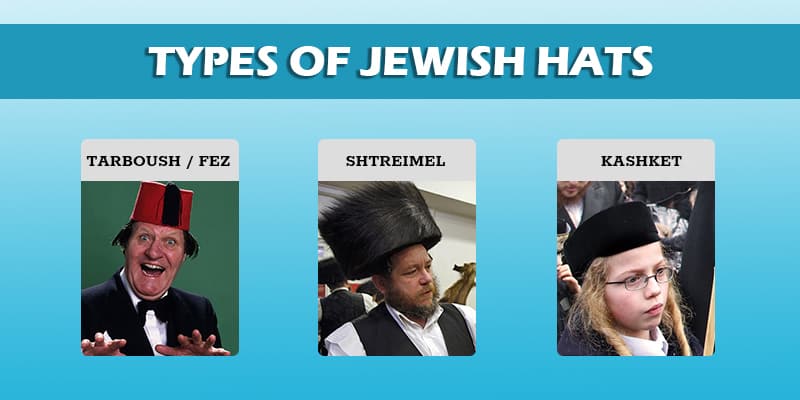
Jewish Hat Types & Purpose – 15 Things To Know (Kippah)
The Kippah is a well-recognized symbol of Jewish identity, and this head covering has a long history and religious background.
Initially, all Kippot (plural of Kippah) were the same, but now they come in different materials, designs, and colors. They can be simple and made of cloth, or they can be ornate with intricate designs.
Now there are Kippot made from lace and ornate adornments for women, and even especially made Kippot for infants.
There are many sub-groups within the Jewish community, and the type of Kippah you wear is also a sign of identification with a specific Jewish group.
So how did the Kippah originate, and how important is it to the Jewish community?
Let’s find out.
Keep reading to find out 15 interesting facts about the Kippah.
1. What Is a Kippah?
A Kippah (plural Kippot) is a small, brimless cap worn in the Jewish community. Only men wear Kippah in the traditional Jewish community.
But in non-orthodox Jewish communities, women have also started the custom of wearing Kippah.
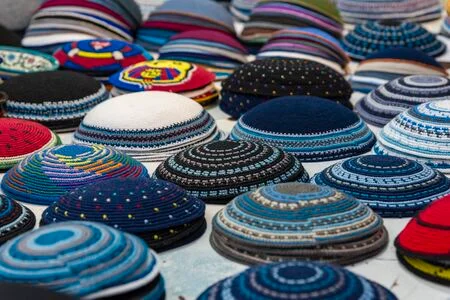
2. Why Do They Call Kippah?
Kippah is a Hebrew word. In Hebrew, the word Kippah means the dome. A Kippah is a head-covering or skullcap shaped like a dome.
The name Kippah indicates that the cap is shaped like a dome.
3. Other Names for a Kippah
The Kippah is also known as a skullcap in English and a Koppel or yarmulke in Yiddish. It is unclear from where the Yiddish terms originated.
Some scholars believe the words come from Polish or Ukrainian languages, while others say they are of Turkish origin.
4. What Is the Difference Between a Kippah and a Yamaka?
There is no difference between a Kippah and a Yamaka; “Yamaka” is the pronunciation of yarmulke, a Yiddish word for Kippah. In Turkish, the word yarmulke translates to half-cap or rain-cap.
In certain countries, America, for example, Yarmulke is more commonly used than the word Kippah.
Spoken Hebrew is a younger language than Spoken Yiddish. However, Hebrew is becoming famous as the language of the Jewish faith. So Kippah is the most common term for this hat.
5. What Does a Kippah Symbolize?
Wearing a Kippah is a symbol of the Jewish faith. Jews believe that wearing a Kippah symbolizes fear and respect for God. They believe that a Kippah separates humans from God and that wearing a Kippah acknowledges that God is above all.
The Kippah is one of the most well-known symbols of the Jewish faith, second only to the Star of David. Today, wearing a Kippah is an outward show of a person’s religious faith.
6. Why Do Jewish Cover Their Hair?
According to Jewish tradition, covering the head is a sign of respect to God, and it is used to indicate awareness of a higher power.
Covering the hair is also a sign of respect during praying and religious ceremonies.
Jewish women are required to cover their hair as a sign of modesty. Women in most communities
start covering their hair once they get married and use a scarf or even a wig to cover their hair. Covering the hair indicates that a woman is married and no longer available.
A woman wearing a scarf or a wig is very similar to a man wearing a Kippah, and it is a show of dignity and religious faith.
7. How Does a Kippah Stay on?
A Kippah doesn’t stay on the head by itself, and it would help if you used clips to hold the Kippah to the head. Both men and women wear Kippot this way. Most Kippot come with attachment clips to fix it, and some have combs sewn inside that hold them in place.
However, some traditional Jews who frequently wear the Kippah wear it without attachments. They know precisely the right type and size of Kippah for their head. And they also know how to position it so it doesn’t fall off.
A bald person can also wear a Kippah. A suede Kippah is the best option for a bald head, as they have a high friction coefficient and won’t slip off easily.
The final option is to use double-sided tape to hold the Kippah in place on the head.
There are Kippot available for infants as well, and these come with a ribbon tie that you can tie under the child’s chin.
If you are a non-Jew wearing a Kippah for a Jewish ceremony, you better clip it firmly in place with clips or bobby pins.
8. History of Jewish Hats
Covering the head goes back to biblical times when priests covered their heads; however, wearing a Kippah became obligatory only in the 17th and 18th centuries.
The obligation to wear a Kippah comes from the Talmud. The Talmud is the central text of the Jewish faith, and orthodox Jews follow it very closely. By medieval times, the need to wear a Kippah was becoming increasingly accepted. Certain ancient Jewish texts indicate that men must cover their heads when walking more than four cubits (around 2 meters).
It was a custom that started early among traditional Jewish communities but grew in popularity in the 17th century.
Initially, Jews wore different types of hats to identify themselves. These were commonly known as Jewish hats, and they were full hats with a central stalk as well as a brim.
There was a lot of anti-Jewish movement during the middle ages and the second world war. Some countries passed laws stating that Jews must identify themselves at all times. This included always wearing a Jewish hat in public, and these rules made the Jewish hats more common. Because wearing a Kippah became the easiest method to distinguish between Jews and non-Jews.
After the second world war, wearing a Kippah became more of a personal choice. The orthodox communities stuck with the tradition, but non-orthodox and reformed Jews were no longer obligated to wear Kippah.
However, the Kippot remained popular among traditional Jews and kept evolving. Today there are many patterns, designs, and styles available.
9. Who Invented the Kippah Hat?
It is unclear who invented the Kippah. Kippah and head covering were mentioned in biblical texts but tracing their origin is not easy.
Many religious texts have mentioned head coverings and veils, but it is not indicated if they are Kippot or some other type of head covering, and there are no details whatsoever about who manufactured the first Kippah.
It is possible that the Jews themselves stitched Kippot, and there is no single inventor.
10. Types of Jewish Hats
Kippah is not the only Jewish head covering, although it is the most popular.
There are many types of Jewish hats, and each style is affiliated with a different Jewish community.
Here are a few examples.
- The Tarboush or Fez: This is a red cylindrical hat that sometimes comes with a tassel. Wearing these hats is a tradition for Jews from the Ottoman Empire.
- Shtreimel: This is a brown, wide hat made from animal tails. It is an expensive hat worn for ceremonies like weddings.
- Kashket: Kashket is popular among by Hasidic children. It is an alternative to a Kippah. A Kashket is black, made of felt, and brimless with a wide band.
11. What Materials Are Used to Make Kippah?
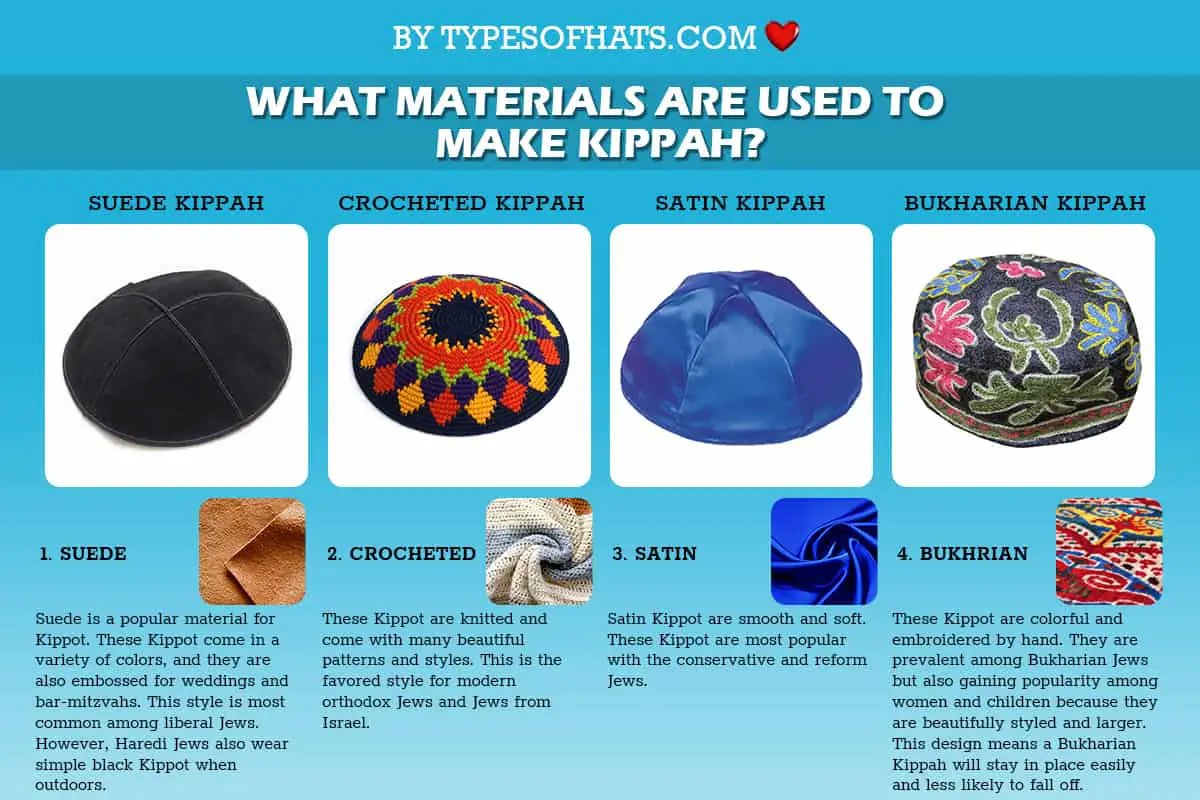
A Kippah is made from a variety of materials. Traditionally, Kippot were made from silk and black velvet. However, today Kippot come in many colors, materials, and styles.
The materials can indicate the community and beliefs of the wearer.
Here are some common types of Kippot.
- Suede Kippah: Suede is a popular material for Kippot. These Kippot come in a variety of colors, and they are also embossed for weddings and bar-mitzvahs. This style is most common among liberal Jews. However, Haredi Jews also wear simple black Kippot when outdoors.
- Crocheted Kippah: These Kippot are knitted and come with many beautiful patterns and styles. This is the favored style for modern orthodox Jews and Jews from Israel.
- Satin Kippah: Satin Kippot are smooth and soft. These Kippot are most popular with the conservative and reform Jews.
- Bukharian Kippah: These Kippot are colorful and embroidered by hand. They are prevalent among Bukharian Jews but also gaining popularity among women and children because they are beautifully styled and larger. This design means a Bukharian Kippah will stay in place easily and less likely to fall off.
12. Is the Kippah Still Used?
Yes, Kippah is still popular among the Jewish community. Today there is a wide selection of Kippot, and the wearer can select one according to the mood, occasion, and religious affiliation. A colorful Kippah is preferred for parties and gatherings, while a simple black Kippah is the best choice for mourning.
There are a variety of options for ladies. These Kippot are often made with lace or beaded wire for a more feminine look.
Some shops even let you personalize your Kippah with words or designs of your choice. Young children often have Kippot with their names embroidered. There is a recent trend of Kippot with comic and cartoon characters, but this trend is frowned upon by many religious Jews.
However, some Jews skip wearing the Kippah in public. This is because they don’t want to showcase their religious beliefs for fear of discrimination against Jews. So they leave off the Kippah when they go to work, at social gatherings, and on important occasions like testifying in court.
13. Do Kippah Protect From Sun?
No, a Kippah is a tiny cap covering just the head’s apex. It doesn’t protect the face or head from the sun. If you want sun protection, you can always wear another hat on top of the Kippah.
Many Jewish men wear another hat over their Kippah because wearing two head coverings is supposed to be more meticulous than wearing one. A Kippah is small, light, comfortable, and can remain on the head all day long, while the second hat offers protection from the sun.
14. Who Should Wear a Kippah?
Traditionally Kippot was only for men, but today women also wear Kippot. Orthodox Jewish men wear Kippot at all times. They wear it throughout the day and during religious events and only take it off during bathing and sleeping.
Orthodox Jewish communities encourage the tradition of wearing a Kippah from a very young age, which is believed to ingrain the habit of wearing a Kippah in later life.
Non-orthodox Jewish men do not always wear a Kippah. They only wear a Kippah during prayers, religious ceremonies, and holidays.
In reformed Jewish communities, wearing a Kippah is entirely optional, and some modern communities even argue against the obligation to wear Kippot. In these communities, wearing a Kippah is always a personal choice, and they are not obligated to wear Kippah even during prayers.
Wearing a Kippah is a sign of respect for Jewish customs. Even non-Jewish men must wear a Kippah when they attend a synagogue ceremony such as a Bar-mitzvah or a marriage held by traditional Jews. Usually, Kippot are given to all guests at Jewish ceremonies like Bar-mitzvahs and weddings.
15. Best Kippah Hats
There are so many Kippah designs and materials out there. If you are planning to buy your first Kippah, you are bound to have a hard time selecting one.
Here are some of the best Kippot we found online.
This Kippah comes with an embroidered picture of Jerusalem, and three colors are available: Blue on white, Gold on white, and multi-color on blue.
These handmade crocheted Kippot come in a pack of 4, each with a unique color.
Final Thoughts
Kippah has evolved through the ages. Once worn only as a sign of Jewish faith, it is now an indication of personal beliefs and association with a particular Jewish community.
Today, one-third of Jewish men regularly wear a Kippah, most of them from the traditional, orthodox Jewish community.
If you plan to don a Kippah to re-establish your faith, you couldn’t have selected a better time. With continuing high demand for Kippah, many manufacturers produce stylish and unique Kippot, and you can easily select one that matches your faith and style.
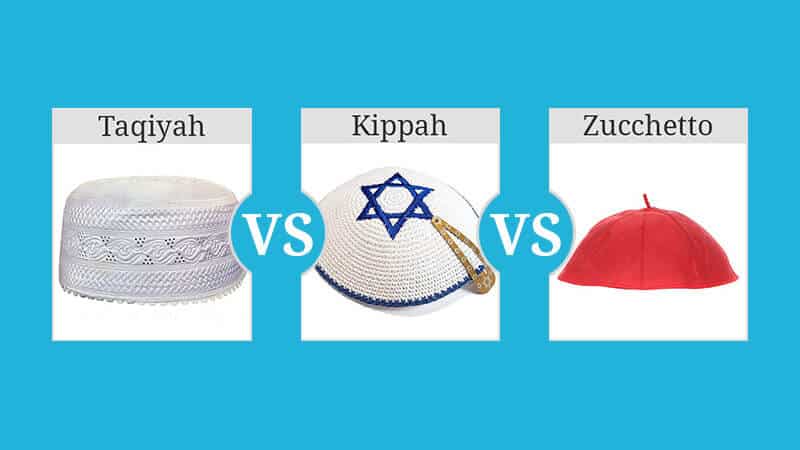
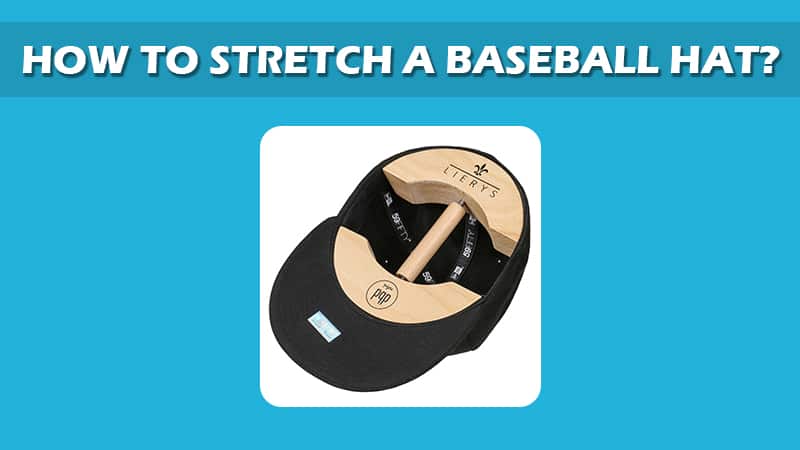

This Post Has 0 Comments